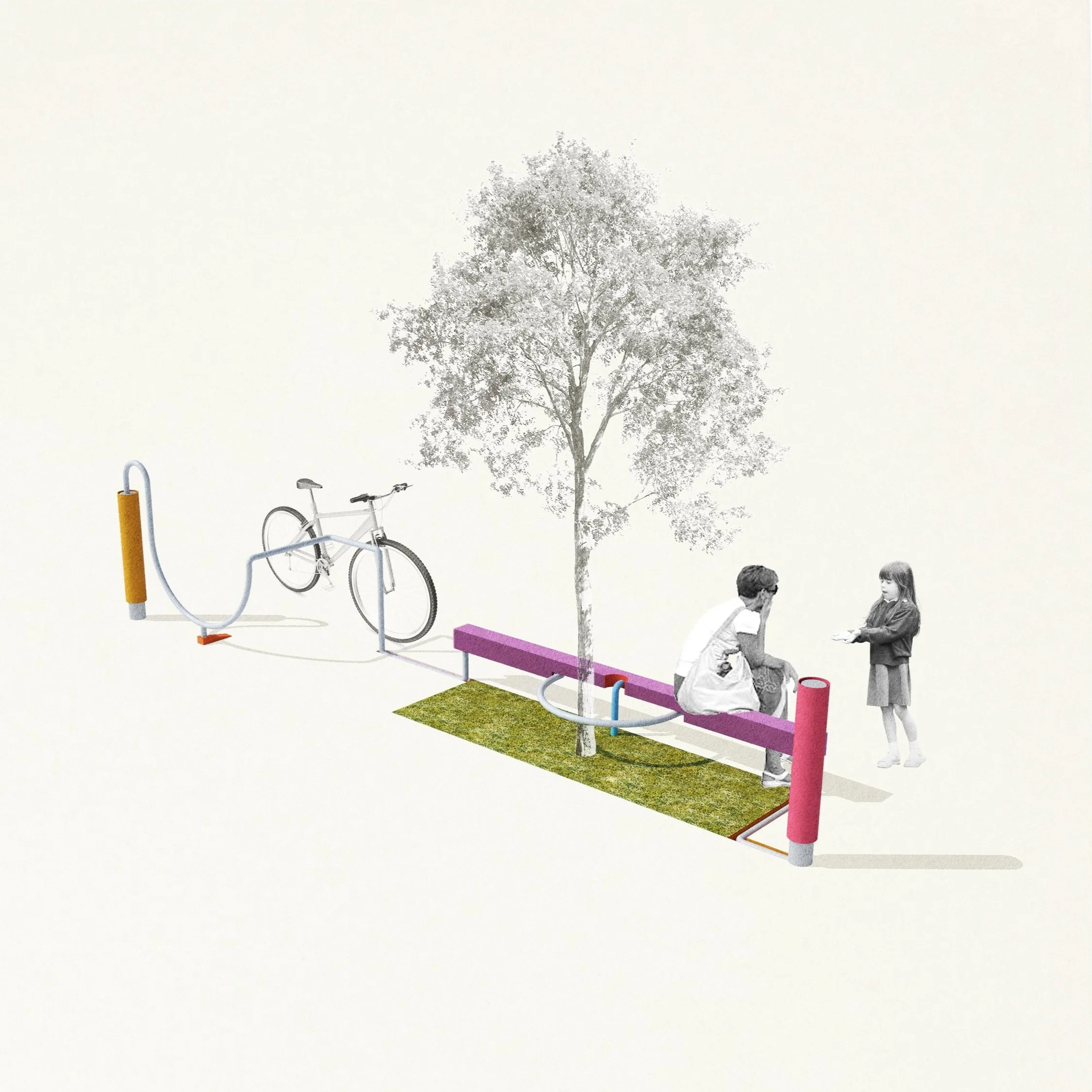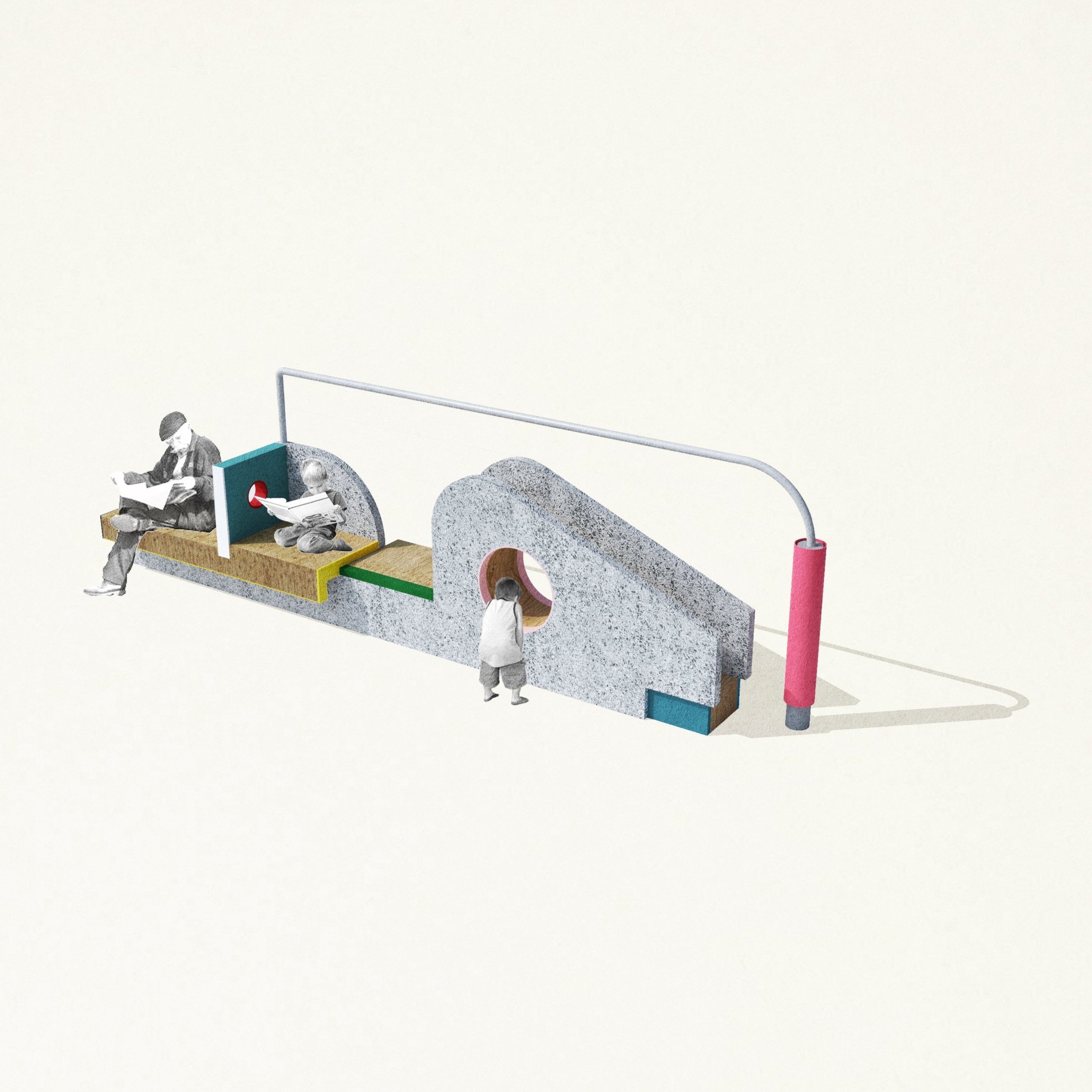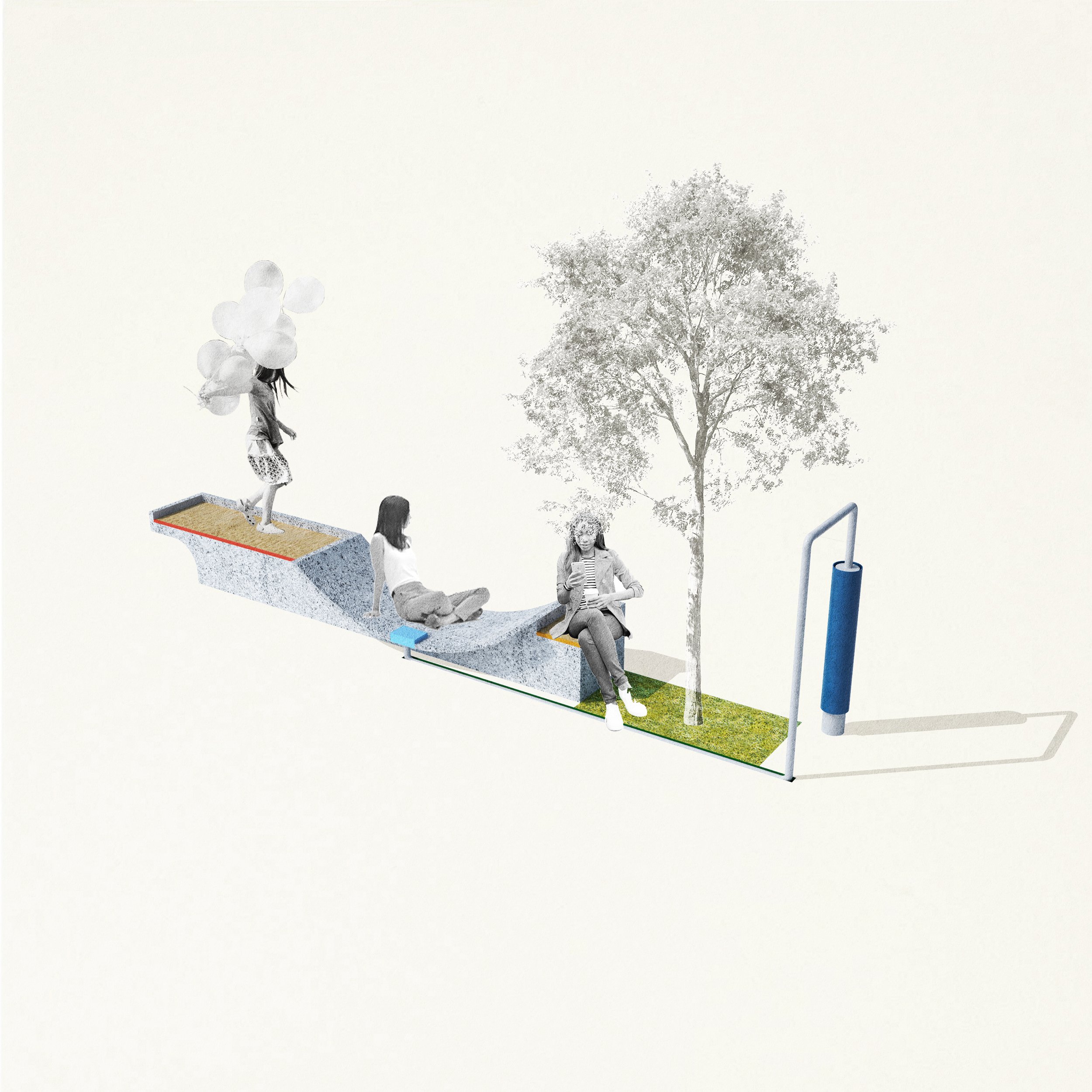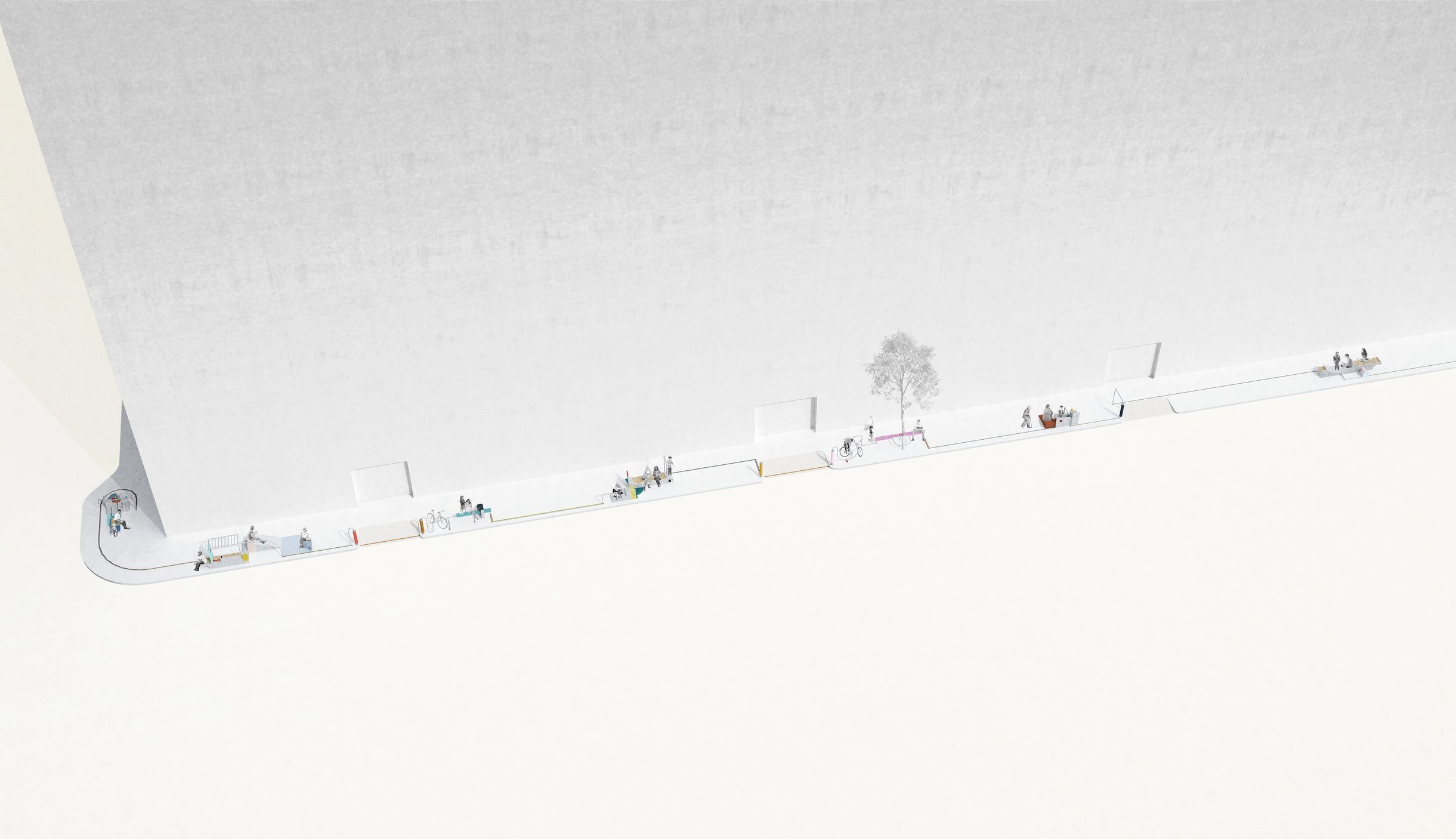
Minna Natoma Art Corridor Project: Rest and Play, San Francisco, CA
In collaboration with Rayyane Tabet
Rest and Play looks into imagination and interpretation as generative tools for designing public furniture. It is developed from an in depth look at playgrounds as places for learning, socializing and world-building and transposes some of these sculptural forms back onto the street with a new purpose. Designed for a multi-generational demographic, the furniture will provide a place to rest for the tired while allowing for different activations by children and adults alike. We see play as a social act, a way to find balance collectively, and so through it we seek to create spaces where interaction and communication can lead to unexpected opportunities.

The discreet singular sculptural forms will be connected by a continuous “spine” that provides a structure to the space linking the Transbay Transit Center to SFMOMA and the Yerba Buena Gardens. The project transforms the streetscape into a promenade where singular occurrences are woven together so that the pieces “walk with you” as you walk down the street, making you pay attention to things previously left unnoticed. A place to sit down becomes an invitation to explore.
While each furniture piece is custom designed to accommodate specific needs and site conditions, they can be mass produced — the pieces follow a few simple rules and can be fabricated using very conventional and straightforward methods.
The concrete structure of the furniture can be cast in manageable segments off-site then delivered to site, fastened together and anchored to the sidewalk. The lighter components, such as seats and color panels, are constructed from wood and painted metal, respectively. These parts are more liable to wear and tear so will be detailed to provide adequate space for cleaning and replacement if necessary. The continuous spine, shown as a stainless steel pipe, consists of standard straight and curved pipe segments, with customized couplings and anchors to allow geometric flexibility. Where the spine stops, at the endpoint of each piece, it anchors into the ground to accommodate either a bollard or a bike rack.
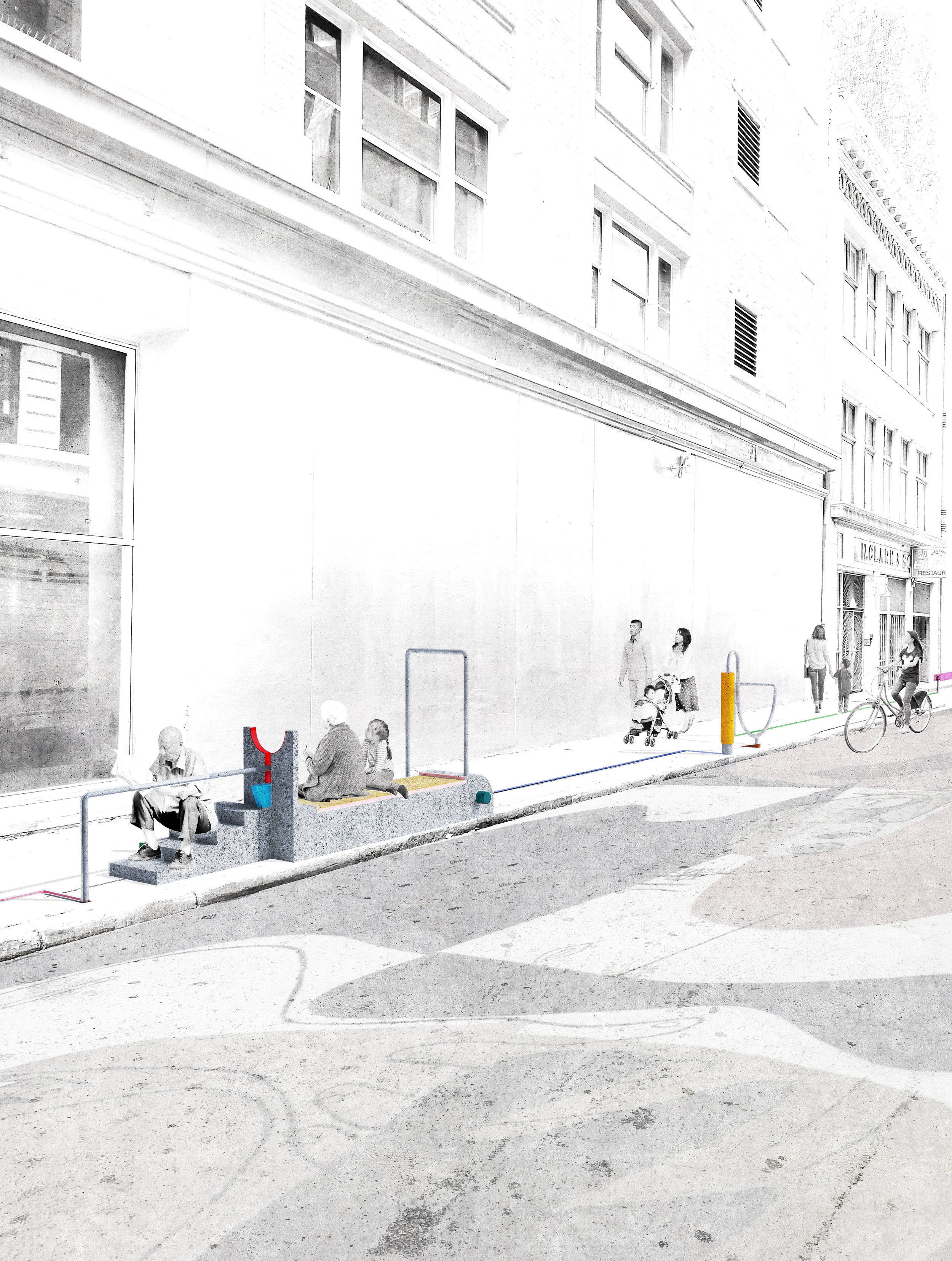
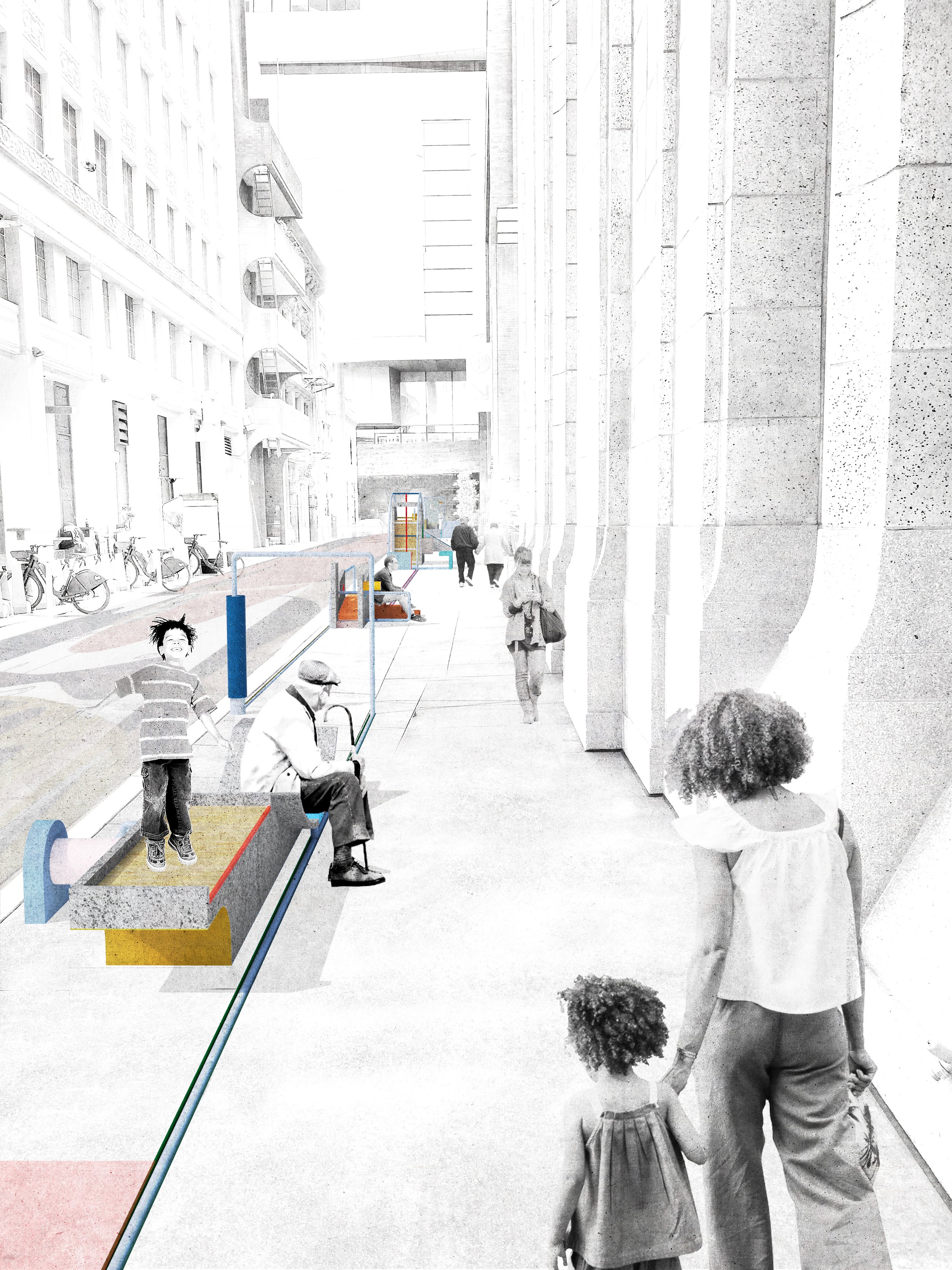
Project Year
2021
Recognition
Competition Finalists


